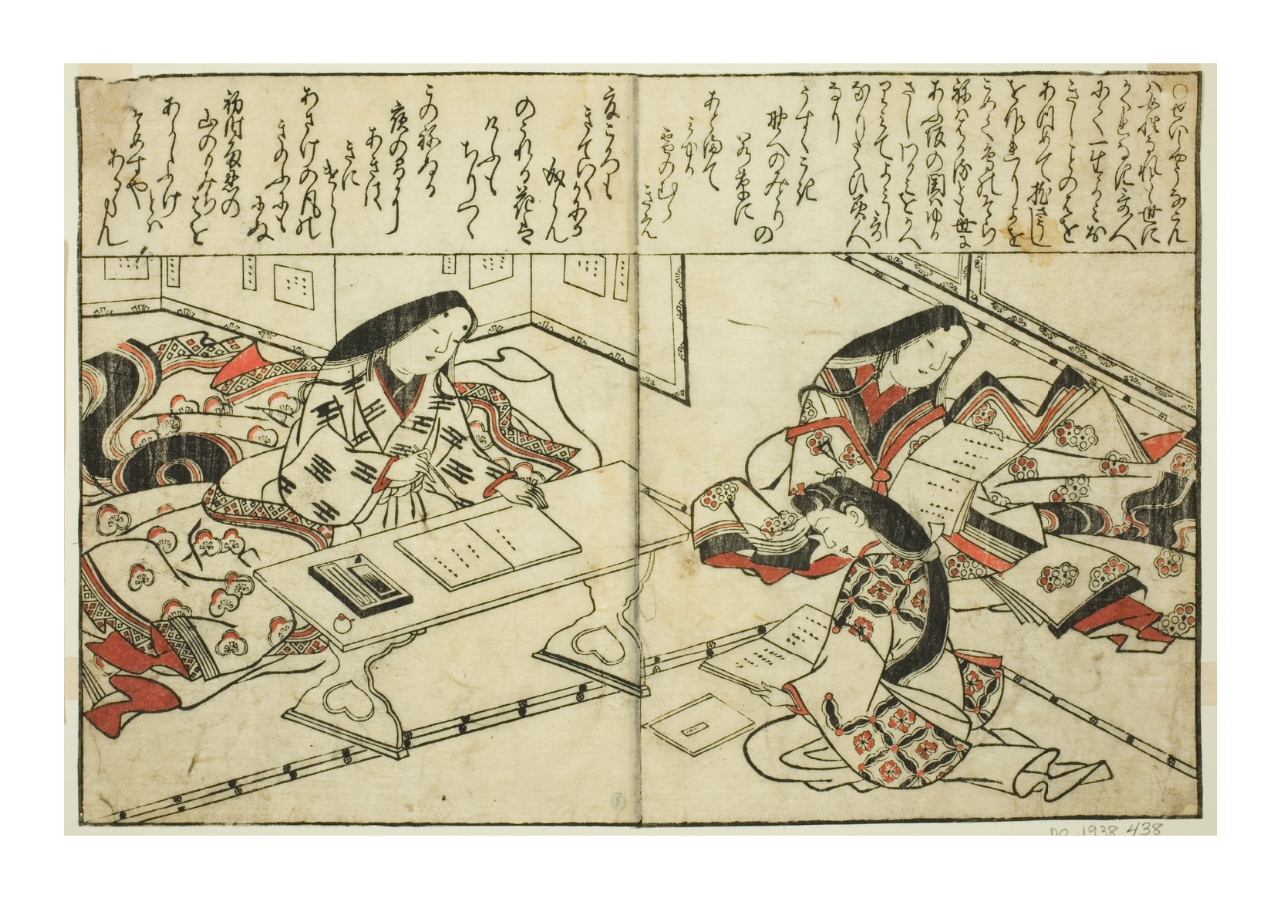Manuscript production

The earliest manuscripts produced in Japan were copied in government offices and Buddhist temples. However, as literacy spread and women gained access to reading and writing, manuscript production seeped into other areas of Japanese society.
During the Heian period, the government department known as Zushoryō was responsible for copying documents important to the government, primarily those written in Chinese. This office was staffed with paper makers, calligraphers, and binders, formalizing the process of manuscript production—except for works of Japanese authorship.[1] Behind the screens of the women’s quarters, though, manuscript production and dissemination carried on as an informal and social practice.
As the highly educated social elite of Japan, women of the court copied and composed poetry as part of their education and as a means of passing long hours within the palace. Sei Shōnagon, for example, recounts her ire at spilling ink on a beautiful book of poetry she is trying to copy:
Copying out a tale or a volume of poems without smearing any ink on the book you’re copying from. If you’re copying it from some beautiful bound book, you try to take immense care, but somehow you always manage to get ink on it.– Sei Shōnagon, "Dispiriting Things"[2]
Murasaki Shikibu, likewise, was engaged in the copying of texts:
Her Majesty was involved in her book-binding, and so first thing every morning we had to go to her quarters to choose paper of various colors and write letters of request to people, enclosing copies of the stories. We were also kept busy day and night sorting and binding the work that had already been finished.– Murasaki Shikibu, Diary of Lady Murasaki[3]
Copying manuscripts for one’s personal collection was not a pastime limited to women, either; the poet Fujiwara no Teika, who lived some two hundred years after Murasaki and Sei, is renowned for the hundreds of manuscripts he made from copies borrowed from friends. It is because of Teika’s tireless hand that Sarashina Nikki has survived to the present day, although he writes in the notes on the copy he made that he doubts it is accurate to the original.[1] This is a problem that has plagued other Heian works as well, copied out by hobbyists who each had their own view and purpose for the text. Perhaps one of the worst victims is Sei’s Pillow Book, which at some point in its history had all its chapters shuffled.
Footnotes
- Peter F. Kornicki, The Book in Japan, (Leiden: Brill, 1998), 96.
- Sei Shōnagon, The Pillow Book, trans. Meredith McKinney, (London: Penguin, 2006), 62.
- Murasaki Shikibu, Diary of Lady Murasaki, trans. Richard Bowring, (London: Penguin, 1996), 32.